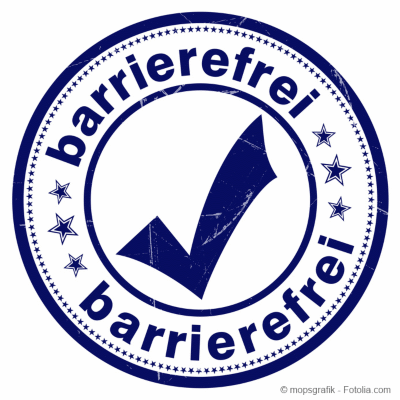Can PDF documents be accessible?
For a long time, the rumour has persisted that PDFs cannot be accessible. Unfortunately, this assumption also persists because the possibilities that exist are used far too seldom and are sometimes less well known.
The tags and techniques for making PDFs accessible to all people need to be known and, above all, are simply less well known compared to HTML. Note: HTML not only has more native tags and attributes, but the W3C has introduced the additional ARIA tags on top of HTML to improve accessibility.
However, it must be said that the creators of websites and PDF documents are the ones who make the content accessible. So as long as the creators of websites and PDF documents know what they are doing in this respect, there is also the possibility of optimising both for accessibility.
So once there is someone who knows and applies the techniques for accessibility, there are many possibilities. For the design of web pages, there is a great variety of tools and techniques. But the tools for PDF files have also become much more versatile in this respect.
Three parts to accessibility
The topic of PDF and accessibility will be examined in more detail in three different parts. In the first part we will give a general overview, then in part 2 we will show what an accessible PDF actually looks like, and finally in part 3 we will discuss conflicts and give a general conclusion on the myth that PDF documents cannot be accessible.
Part 1: General Overview – On Accessibility in the Digital World
In the course of digitisation, universal and unrestricted access to documents has become increasingly important. Since PDF documents can characteristically be created quickly and easily and also always look the same and can be read from any device, they have become more and more irreplaceable. On the one hand, this concerns the digital dispatch of documents, but also the printing of documents or working with forms. In general, it is about making content available.
Accessibility means “unrestricted access for all” and also refers to the Act on the Equality of Persons with Disabilities (BGG), which is intended to prevent discrimination against a person on the basis of his or her disability. The simplest and best-known example is that a building must offer not only stairs but also a way for people with walking disabilities to enter the building without assistance. In other words, areas of life that are accessed by people must be made equally accessible and usable for all people. This refers not only to facilities/buildings/public areas, but also, for example, to information that is provided digitally through PDF documents, among other things.
Are PDF documents available to everyone without restriction?
At this point, a problem always arises when people cannot access this content and thus information is not available to everyone without restriction. This is always the case if, for example, they cannot access PDF documents due to a disability. This is because a blind or visually impaired person needs a certain precaution (screen reader) to be able to read/listen to a PDF at all. At this point, one must also mention the Disability Equality Act, on the basis of which public bodies are legally obliged to ensure that all digital offerings are barrier-free, i.e. accessible to all people.
While a sighted person simply opens and reads a PDF and can visually recognise where in the text there are, for example, headings, other structural or visual references, a blind/visually impaired person has to obtain this information differently. This applies to all text elements of a structural nature, such as paragraphs, lists, references, tables and indexes. As a rule, however, this is only possible if the digital documents are prepared accordingly.
For the creation of an accessible PDF document, the following are important: tags (as a prerequisite for screen reader and speech output/input to work), document title (as orientation), document language, security settings (assistive technologies must be able to access the document), consistent structure of the document, bookmarks (for easier navigation), all graphics must be provided with alternative text and visually visible spaces must be present in the content and in the tag tree in the PDF. It is also important to have enough contrast in text so that visually impaired people can read the text better.
More details on the creation of low barrier and accessible PDF documents can be found in the next part 2.
PDF documents and accessibility
PDF documents are popular because they can be used universally and can be read from any device. Firstly, barriers are overcome and printed matter, forms and other information can thus be used comprehensively. On the other hand, blind/visually impaired people may not be able to use PDF documents if they are not provided barrier-free, i.e. cannot be optimally grasped by a screen reader.
Due to the Disability Equality Act, public bodies are obliged to design digital offers barrier-free. This means that when creating PDF documents, care must be taken to ensure that they are barrier-free and that they are checked for this at the end. The creation of accessible PDF files and the checking for accessibility is not always unproblematic and must continue to be demanded more and generally become more conscious to all people. You can read more about the conflicts in the creation of accessible PDF documents in the upcoming Part 3.
More infos here:

